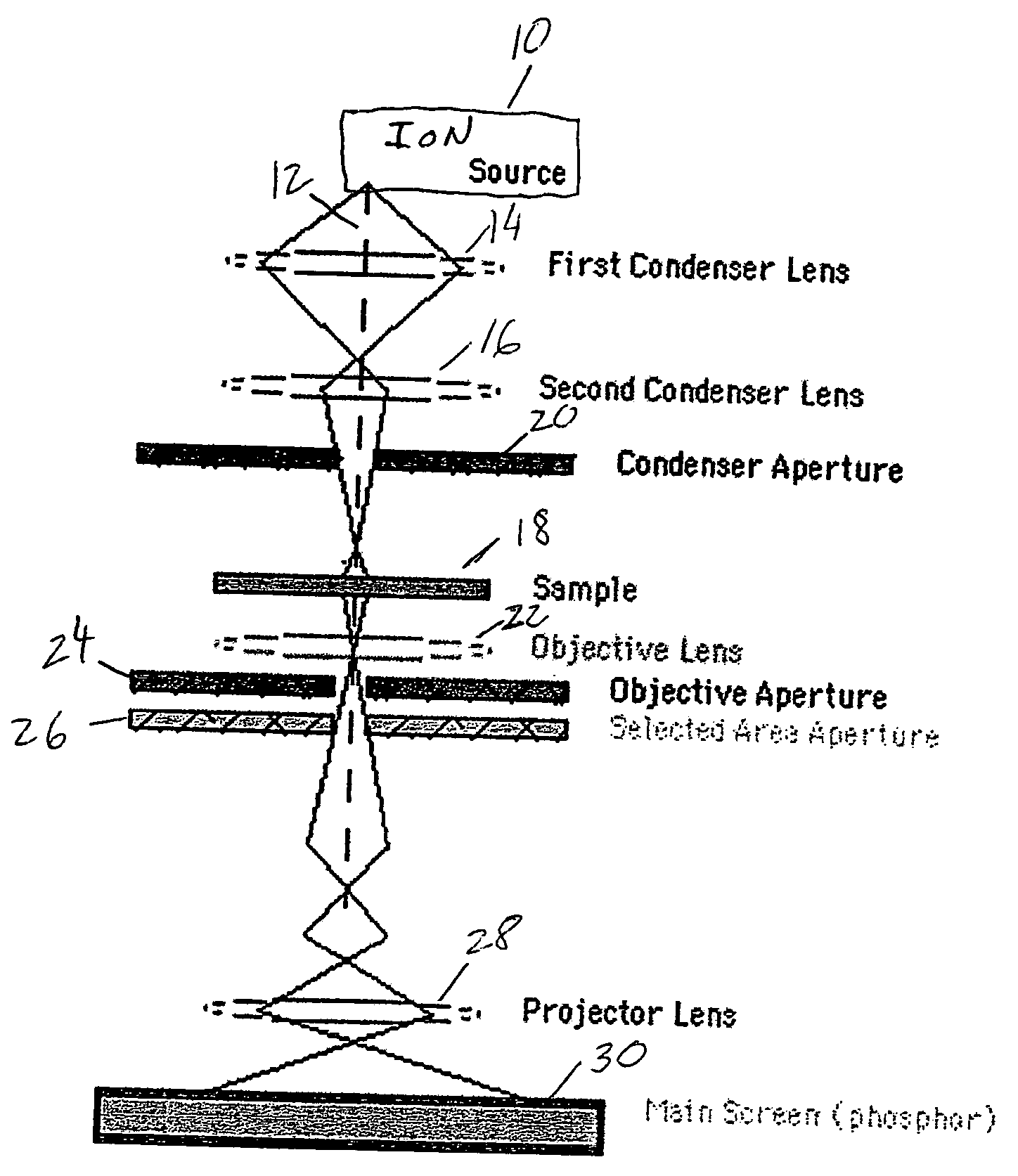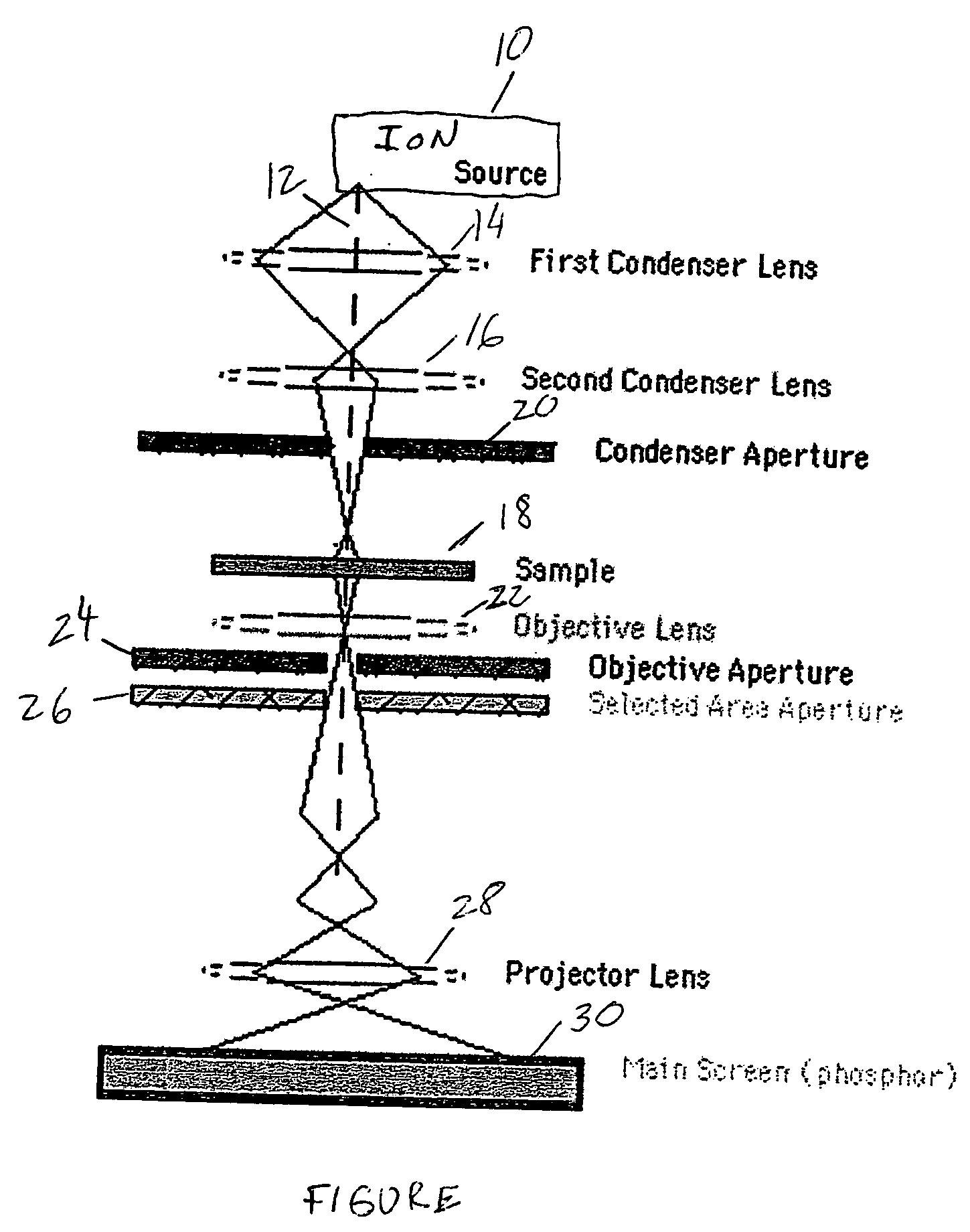Transmission ion microscope
a technology of transmission ion microscope and electron microscope, which is applied in the field of microscopy, can solve the problems of large, complex and expensive instruments utilizing very high energy electrons, operational burden, and slow methods that require mechanically, and achieve the effect of improving contras
- Summary
- Abstract
- Description
- Claims
- Application Information
AI Technical Summary
Benefits of technology
Problems solved by technology
Method used
Image
Examples
Embodiment Construction
[0008] The transmission ion microscope of the invention works substantially the same way as known transmission electron microscopes (TEM) that can be thought of as an analogy to a slide projector. A slide projector shines a beam of light through a slide and as the light passes through it is affected by the structures and objects on the slide. These effects result in only certain parts of the light beam being transmitted through certain parts of the slide. The transmitted beam is then projected through a viewing screen forming an enlarged image of the slide.
[0009] Existing prior art transmission electron microscopes work the same way as a slide projector except that such microscopes shine a beam of electrons through a specimen rather than light. Whatever part of the electron beam is transmitted is projected onto a phosphor screen for the user to see. In the present invention, the source of ions replaces a source of electrons in a typical TEM.
[0010] With reference to the single FIGU...
PUM
 Login to View More
Login to View More Abstract
Description
Claims
Application Information
 Login to View More
Login to View More - R&D
- Intellectual Property
- Life Sciences
- Materials
- Tech Scout
- Unparalleled Data Quality
- Higher Quality Content
- 60% Fewer Hallucinations
Browse by: Latest US Patents, China's latest patents, Technical Efficacy Thesaurus, Application Domain, Technology Topic, Popular Technical Reports.
© 2025 PatSnap. All rights reserved.Legal|Privacy policy|Modern Slavery Act Transparency Statement|Sitemap|About US| Contact US: help@patsnap.com


